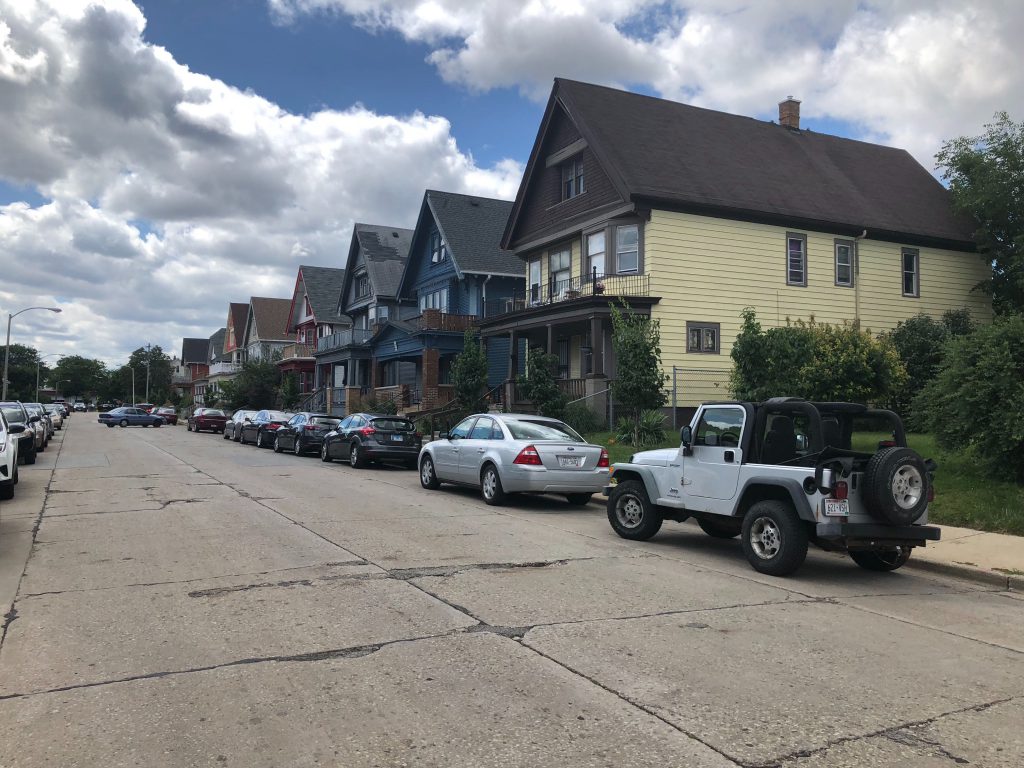15,000 County Residents Have Gotten Rental Aid
But thousands more wait for help as agencies struggle with backlog.

Homes along N. 17th St. Photo by Jeramey Jannene.
The two agencies charged with disbursing emergency rental assistance funding to Milwaukee County residents are struggling to keep up the demand.
According to U.S. Department of Treasury data, both Community Advocates, which distributes funds to Milwaukee residents, and the Social Development Commission, which serves Milwaukee County, have disbursed about $45 million apiece, according to numbers provided by organizations.
The emergency funding comes from the Wisconsin Rental Assistance Program, the Milwaukee Rental Assistance Program and from the federal Emergency Rental Assistance Program.
Since 2020, Community Advocates has served over 10,000 households and the Social Development Commission has helped 5,000, officials from both organizations said.
The Social Development Commission, in particular, has struggled with processing applications efficiently and has dealt with staff turnover. Executive Director George Hinton said his organization now has a new system, a consistent staff and in-person help to help smooth out the process.
Deb Heffner, the housing strategy director at Community Advocates, said there is always at least 4,000 applications in queue.
And the Social Development Commission, or SDC, receives a minimum of 400 new applications a week, Hinton said.
“People’s reasons for needing aid have not changed,” Hinton said. “Many people aren’t working, and just when things were going back to normal, it feels like we’re in 2020 all over again.”
“Some people are working and still can’t maintain bills,” added LaSonda Buck, the rent assistance supervisor at SDC.
‘Extreme need’ not new
Hinton said the Social Development Commission and Community Advocates stay in constant communication to ensure residents get served.
In addition, Heffner said collaborative spaces like the Rental Housing Resource Center, which streamlines housing services and service providers, also have helped.
“This has offered a lot of opportunities to work on system changes,” she said. “That’s what we are working on and hope to work more on once we get through the queue.”
City and county leaders have also launched efforts to help residents avoid evictions. In November 2020, the Milwaukee County Board of Supervisors declared that each resident has a “right to shelter” but did not fully fund the mandate to curb homelessness.
Another program, Milwaukee’s Right to Counsel pilot program, also known as Eviction Free MKE, has been working to slow the pace of evictions since September. It provides no-cost legal representation for residents facing eviction or foreclosure.
“This extreme need was not news to those of us who have been in the housing insecurity space for decades,” said Mike Bare, the research and program coordinator for Community Advocates. “The pandemic just shined a light on issues we’ve been discussing.”
“Wages are too low, and housing is too high,” he said.
“These are not just unfortunate things that are happening to people,” said Bare. “These struggles are the results of choices that we are choosing to live with.”
Hinton said we need to “change the systems that are creating and maintaining poverty.”
Hayden Harwood, a member of the Milwaukee Autonomous Tenants Union, said we also need to ask questions about who’s making the policies affecting people and why we commodify housing.
The union challenges evictions, makes tenants aware of their rights and sometimes takes on negligent landlords.
“Join Milwaukee Autonomous Tenants Union or create your own,” Harwood said. “Get to know your neighbors. If you’re having a problem, they probably are too.”
Hinton said hardships existed before the COVID-19 pandemic.
“Too many people were living and continue to live on the margins,” said Hinton. “So when unexpected circumstances hit, as they do in life, thousands of Milwaukeeans were unequipped to handle it.”
For your information
Both Community Advocates and the Social Development Commission are still accepting and processing applications. Leaders ask for patience from landlords and tenants as they continue to get through the queue of applications.
Resources to consult if you’re worried about eviction
- Community Advocates rent helpline: 414-270-4646
- Legal Aid Society of Milwaukee: 414-727-5300
- Mediate Milwaukee: 414-939-8800
- Legal Action of Wisconsin: 855-947-2529
- Social Development Commission: 414-906-2700
- Rental Housing Resource Center: 414-895-RENT (7368)
15,000 Milwaukee residents have received rental aid. But thousands more wait for help. was originally published by Milwaukee Neighborhood News Service.





















